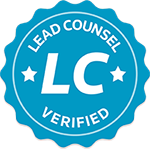Use IRS Standards for Your Expenses
Video Transcribed: Edward Kelley here, a bankruptcy attorney in Oklahoma City for Wirth Law, answering your bankruptcy in Oklahoma questions. We’re in video three of a series on, am I a good candidate for an Oklahoma Chapter 7? Which again, a quick summary, is a liquidation bankruptcy versus a Chapter 13, which is a restructured plan that may pay some or all of your debt. Chapter 7 is cut and run, which is what you want to do if you can’t.
We talked first about whether you qualify income-wise, meaning do you make 45,000 or more gross or below for one person and about 10,000 on top of that apiece for each additional family member. And then we talked about, in the last video, is the type of debt that you have make you a good candidate, meaning basically you want unsecured, what they call non-priority or normal debt.
Of course, you can reaffirm your car and home and things you want to keep, and just basically not consider those, but is the rest of your debt enough and of the type that you will benefit from? And as I mentioned, today we’re going to talk about, are a good candidate to complete the process successfully? So what does that mean? And here I’m going to talk more about reaffirmations.
So let’s say you do have a $500 car payment and a $500 mortgage, so you’ve got a thousand there. We calculated your gross income minus your expenses, to say that you have, not including those car payments, about 1500 left.
 So there we’ve got a problem because number one, we may not have included your social security in terms of qualifying you, but it comes back here in terms of your disposable income. So if you’re too far over, that means after you make the car and a house payment, supposedly you have 500 a month left.
So there we’ve got a problem because number one, we may not have included your social security in terms of qualifying you, but it comes back here in terms of your disposable income. So if you’re too far over, that means after you make the car and a house payment, supposedly you have 500 a month left.
So you may have trouble getting past the trustee and successfully completing this. They may say, “No, you are abusing Chapter 7 because you should be earmarking that 500 a month in a 13 to pay for your debt.” So, long and short, you want to end up between 100 and zero left over per month after all of your expenses, and that’s not counting the debts you’re getting rid of, if that makes sense. If that’s the case, then no problem.
And this is again where, although we didn’t calculate your social security for purposes of being able to do a 7, all of your income is considered in terms of your disposable income on the back end, so to speak. So we want to make sure you’re there about 100 to zero.
And also the flip side of that is you have to have enough money to make your payments. So let’s say we did your calculations, and considering now only your normal expenses and your car payment and your house payment, you’re at negative 500.
Well, you’re not going to be allowed to sign those reaffirmations, which have to be filed with the court, to keep the vehicle, and you may have some problems with your mortgage. So, you want a positive number.
So again, everything we’re getting rid of, you don’t think about anymore. Everything you’re keeping, you keep that payment. We use IRS standards for your expenses. And then we want everything to come out to about zero to 100 in disposable income per month. And that will mean that you’re a good candidate to complete it.




























